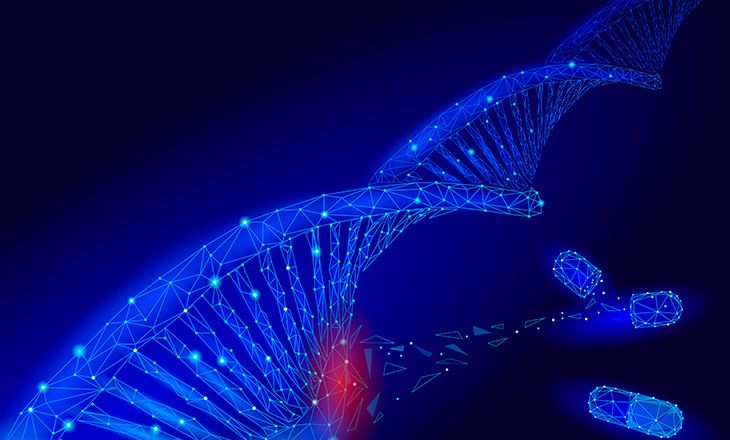Therapeutic oligonucleotides have emerged as an exciting and promising class of drugs capable of offering treatments for genetic and/or rare diseases. These DNA or RNA fragments have revolutionised the field of modern medicine… In this blog, we will explore what therapeutic oligonucleotides are, how they work and their potential applications, with a special focus on their contribution to the development of therapies for rare diseases.
What are Therapeutic Oligonucleotides?
Therapeutic oligonucleotides are DNA or RNA molecules specifically designed to interact with the genetic material of a cell to produce a curative effect in the body.
Unlike conventional drugs, which target proteins or enzymes, therapeutic oligonucleotides work at the genetic level, modifying the expression of specific genes. These oligonucleotides can take various forms, such as antisense oligonucleotides (ASO), small interfering RNA (siRNA) or microRNA (miRNA). These molecules have become powerful weapons against genetic diseases and other disorders.
How do Therapeutic Oligonucleotides Work?
The key to understanding how therapeutic oligonucleotides work lies in their ability to interfere with the expression of specific genes. Genetic diseases are often the result of abnormal protein production due to a faulty gene sequence. Therapeutic oligonucleotides are designed to correct or modify this abnormal production.
The main approaches to oligonucleotide-based treatments are:
- Oligonucleotides antisense: these molecules bind to the messenger RNA (mRNA) of a specific gene, preventing its translation into protein. This may reduce the amount of a harmful protein or increase the production of a deficient protein depending on the disease being treated.
- siRNA: siRNAs are RNA molecules that guide the degradation of the corresponding mRNA, thus preventing the production of the encoded protein. They are like “molecular scissors” that cut off the production of abnormal proteins.
- miRNA: miRNAs are small RNA sequences that regulate gene expression by binding to and degrading mRNA, inhibiting translation or modulating its stability, among other effects…
- Aptamers: Aptamers are DNA or RNA sequences that are similar to antibodies by folding into unique three-dimensional structures. Among their many applications are as a therapeutic molecule. They can function directly by binding directly to specific proteins to inhibit or activate them and/or trigger a therapeutic immune response; or indirectly in drug delivery or diagnostic applications.

Potential Applications of Therapeutic Oligonucleotides
Therapeutic oligonucleotides have a broad spectrum of applications, ranging from common genetic diseases to rare diseases. Some of the most prominent applications include:
- Genetic diseases: oligonucleotides can very specifically correct genetic mutations responsible for diseases such as Duchenne muscular dystrophy, spinal muscular atrophy and cystic fibrosis.
- Cancer: They can target genes involved in cell proliferation and survival, offering a novel therapeutic approach in the fight against cancer.
- Neurodegenerative diseases: Oligonucleotides can be used to modulate gene expression in diseases such as Huntington’s syndrome and amyotrophic lateral sclerosis (ALS).
- Metabolic diseases: They can regulate genes involved in metabolic diseases, such as familial hypercholesterolaemia.
- Personalised Therapies: The ability to design oligonucleotides specific to an individual or a particular genetic mutation promises personalised therapies.
Therapeutic Oligonucleotides in the Development of Therapies for Rare Diseases
One of the most exciting advances in medicine is the use of therapeutic oligonucleotides in the treatment of rare diseases. These conditions, which often lack viable therapeutic options, have become a major focus of research. Oligonucleotides offer real promise for addressing the genetic roots of these diseases and providing effective therapeutic solutions.
In the OLIGOFASTX project, several oligonucleotide molecules of various types are being developed to address 7 different rare diseases. In addition to their development, release and sustainable production systems are being validated, thus generating a unique industrial niche for the emergence of new oligonucleotide-based therapies in Spain.
In summary, therapeutic oligonucleotides represent a revolution in the treatment of genetic and rare diseases. Their ability to modify gene expression offers a precise and personalised approach to address a wide variety of medical conditions. As research and development continues to advance, we are likely to see significant growth in the availability of oligonucleotide-based therapies, providing hope for patients who previously lacked effective treatment options.
Don’t miss the other interesting articles on the OLIGOFASTX project blog about therapeutic oligonucleotides: development, applications, challenges, technologies, regulation and much more.
Sources:
[Therapeutic oligonucleotides: a review]
Clinical applications of gene therapy for rare diseases: A review
Antisense technology: A review – PMC
Full article: RNA-based therapeutics for neurological diseases

 Español
Español
